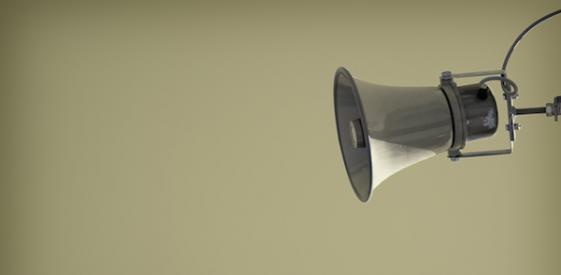The Five Unbreakable Rules of In-Store Signage

In the continuously evolving retail marketing mix, the classic sign remains a powerful “soundless salesperson.” Artfully influencing shoppers with clever words, strategic placement, and purpose-driven designs, in-store signage still sells.
You need to make sure that your signage is of the strong, silent type. For a sign program that is potent and persuasive, follow these timeless rules:
Optimize Signage Visibility: Work the Angles to Catch Shopper Attention
To be effective, your signs need to be visible. The first 10 to 20 feet into a physical store is known as the “decompression zone,” where a shopper can catch their breath and orient themselves to the space. One of the first things customers do in this area is to look up, above the light fixtures, for in-store signage that provides navigational cues. These signs should be well lit, not placed in shadow or blocked by architectural features.
Regardless of where the shopper is in the store, their primary field of vision is generally 45 degrees up or down from eye level to a distance of about five feet. Shelf signage placed less than two feet from the floor can be difficult, if not impossible, to read.
Light Up Your In-Store Signage: Why Illumination Drives Engagement
Illumination is typically one of the last things retailers consider, leading to poorly lit signage. As a general rule, lighting for in-store signs should be double or triple that of the store’s ambient light level. If ambient lighting is 50 foot-candles (fc), for example, signs should be lit at 100, or even 150, fc. Light can be targeted through the use of floodlights or spotlights.
Use Strategic Color in Retail Signage to Influence Shopper Behavior
Color plays a large role in the creation of the shopper’s experience, from setting the mood to assisting with in-store navigation and wayfinding.
Colors communicate specific cues: yellow and red create a sense of urgency among shoppers, blue suggests security, and green inspires the calm of nature. Black is typically associated with luxury and prestige. (Big box brands like Walmart use black to add a touch of sophistication.)
Of course, a signature brand color, like Target red, should take precedence in store signage.
Retail Signage Design Tips: Stay Clear, Consistent, and On-Brand
It’s important for in-store signage to maintain a consistent look and feel, for both aesthetic and practical purposes. The eye is trained to scan for like items. Consistency reduces the feeling of clutter.
It is best to avoid using cursive (and not just because they don’t teach it in school anymore). Script is difficult to read at distances beyond two-and-a-half feet, and it can feel archaic.
Avoid funky typefaces as well. If it’s hard to read, don’t use it. Shoppers will not put the effort into decoding overly elaborate fonts.
Blend Brand Personality with Practical Messaging in POP Displays
Demonstrating brand personality is a great idea, but it shouldn’t come at the cost of shopper comprehension. Shoppers need to be able to understand a sign in mere seconds.
Lifestyle imagery will help communicate information. Shoppers process images before text, so the key is to suggest a story with a visual representation, then drive home the key message — “Great deal!” “Like these?” “Try this!” — in five words or less.
Partner with Retail Signage Experts to Maximize Customer Experience
These guidelines will help you create impactful and effective in-store signage for your brand or retail location. But you don’t need to know all the ins and outs of retail marketing to achieve your marketing goals. Medallion Retail understands the strategy, design, and logistics involved in successful signage and displays. Contact us today to find out how our experience can help your business.